GTG Links 50 – Fleshing out the picture of 2023 game emissions + releasing on old hardware + extreme weather and insurance losses + Geoff Mann on climate politics

This week's post is heavily weighted towards new annual disclosures from games companies, and my annual spreadsheet collecting their numbers is filling up (I'm at about 20 out of an expected 30-ish disclosures now) so we are probably about 2/3rds of the way towards a new 2024 net zero snapshot. There are still several large companies we're waiting on, but a picture is emerging. It's still too early to say definitively what the results will be, but if I were a betting man, I would say we have yet to see emissions from the games industry peak...
This is going to have flow-on impacts for the future, as our remaining carbon budget rapidly dwindles and the importance of rapid cuts to emissions becomes even more obvious. More on this in a future post though - for now, let's see what people are disclosing about their 2023 activities and emissions.
Before we get into that though...
The Sustainable Games Alliance has launched
This is huge news and the response has been incredibly positive so far already. We're excited to finally be out there properly, and we even got some very positive coverage. Venture Beat did a whole interview with Jiri, and Pocket Gamer did a great write up as well. Check them out, and please help spread the word!

Again, if you're going to be at Gamescom – get in touch!
Stillfront’s ESG report – and a discussion of Scope aggregation
This was released back in April (which is a much better timeline than this "we'll get it out by September" business which is a real drag, TBH!) but I only just spotted it, so here it is and there's some interesting stuff going on. [PDF]

Stillfront's 2022-2023 change seems to be mostly driven by a change in market-based Scope 2 numbers – i.e. by purchasing more renewable power (which is good, and has flow-on effects on Scope 3 Cat 3 figures as well, amplifying the effect). There's also a lower number for upstream transport and distribution and employee commuting – are staff biking to work more? Another answer might be the shift in working patterns as people head back to the office, with WFH energy counted in this category as a form of virtual commuting. As some research done during the pandemic found, in certain cold-climate countries it's possible that WFH increases energy consumption though, because of heating lots and lots of home offices individually rather than one office collectively. An interesting and complex paradox. Here's their summary of the results, and then I want to talk about the climate impact figures:
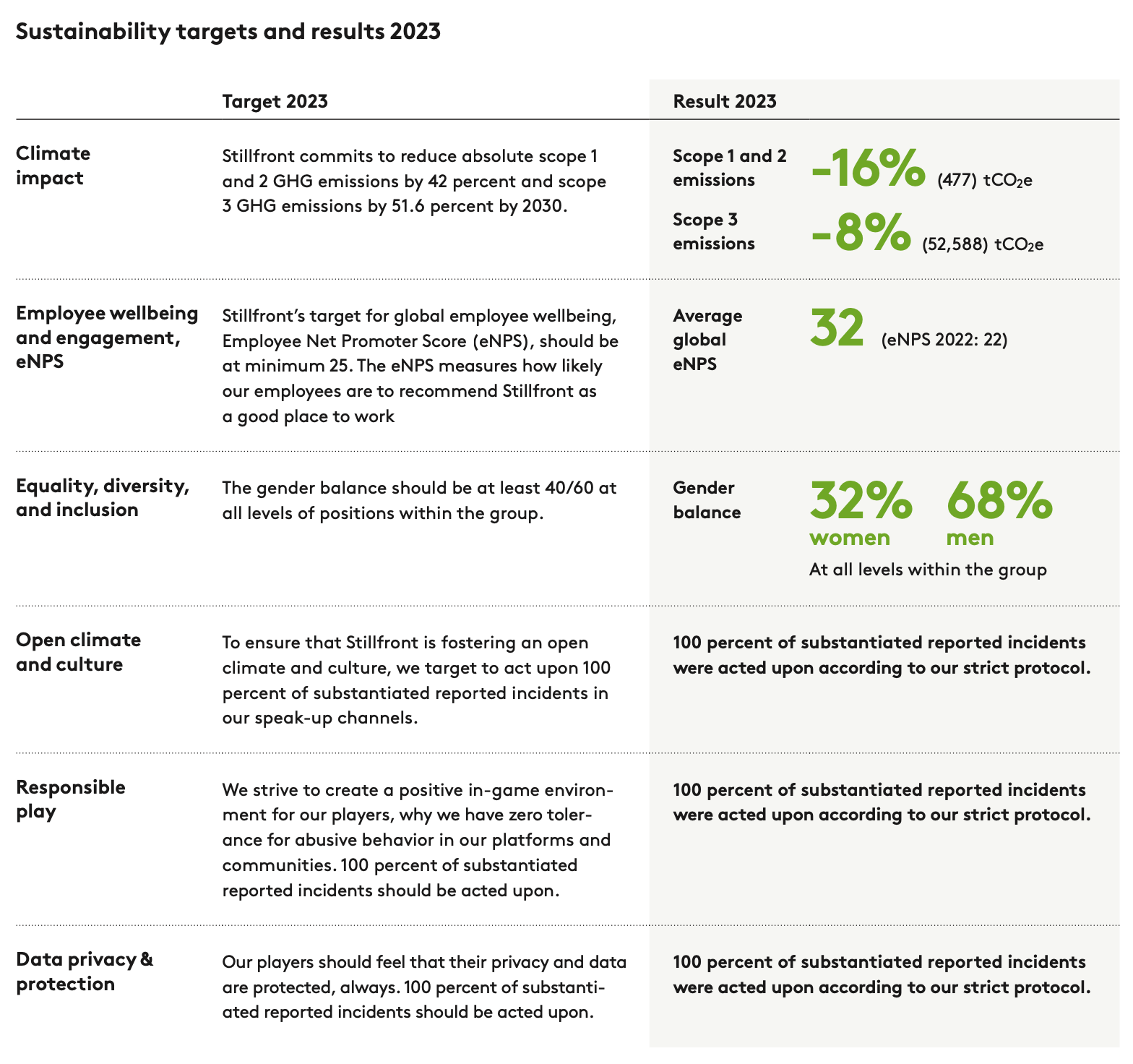
One of the points raised in both the recent SBTi Scope 3 paper and the Governing Net Zero paper (which I summarised in our own SGA Scope 3 briefing paper) is the need to set targets for Scopes separately. This is a question of both granularity for operational reasons, but also for transparency – because as in the table above, a small, but not irrelevant increase of Scope 1 emissions of 4% can be subsumed into a larger decrease in Scope 2 emissions, possibly changing the overall narrative and appearance. In the wrong situation, this can unintentionally obscure what is actually going on. The risk here is that critical viewers of this information could accuse disclosers of greenwashing, by presenting only a rosy view of things, when the underlying dynamics (i.e. the drivers of Scope 1 emissions) might be largely unchanged, and a change in market-based calculations (for Scope 2) can be reflecting more of a difference in accounting than usage, as it hinges on the credibility of RECs, for instance. Here's what the Integrity Council for the Voluntary Carbon Market found when they reviewed carbon crediting schemes in the energy market:
eight methodologies used to design and implement renewable energy projects fail to meet the CCP Assessment Framework requirements on additionality because they are insufficiently rigorous in assessing whether the projects would have gone ahead without the incentive of carbon credit revenues. These methodologies cover approximately 236 million unretired credits, making up 32% of the voluntary carbon market.

To be absolutely clear, this is not an accusation I'm levelling at Stillfront or the team producing their disclosures – quite the opposite. I think this is another example of the ubiquitous challenges that all ESG preparers face in the current reporting environment, and it is exactly the sort of situation with no one really at fault. There are few rules and even fewer best practices, and methodologies are seemingly constantly evolving. The SGA Standard that we are working on will hopefully be able to address these types of situations and bring more clarity and procedural fairness to just this type of thing, by specifying required methods of measuring and disclosing emissions, and identifying the metrics that truthfully reflect the underlying dynamics driving specific emissions. In this way I think it will help people understand fundamentally what is happening with emissions, leading to the ability to make smarter, sustainability focussed interventions that will bear real fruit.
EA's impact report isn't out... but the annual report has some hints at what's coming
A couple of tidbits in it are quite intriguing. I'm still expecting the report to be out in September, as in past years, but until then check out this new commitment to "net zero" in line with the Paris Agreement. This sounds like a possible future SBTi submission to me... that would be a substantial change.
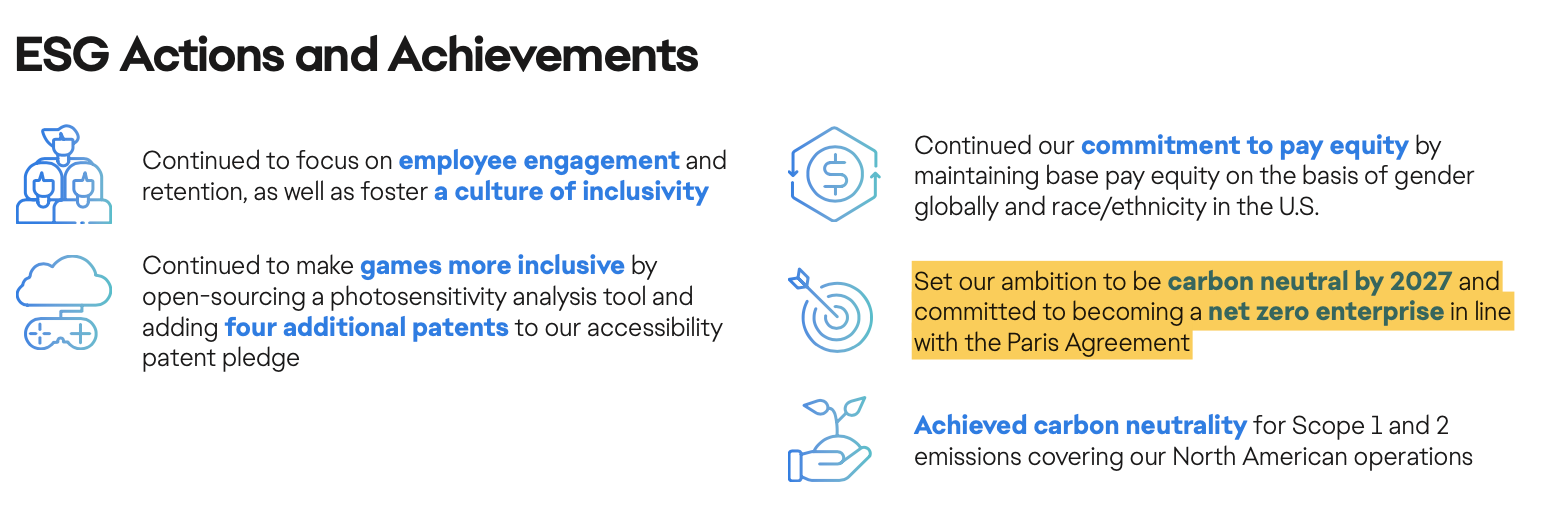
NetEase ESG report is out
Here's a direct link to the report. [PDF] For those playing along at home, they've managed a year-on-year decrease of 1.63% across the three Scopes. That's good.
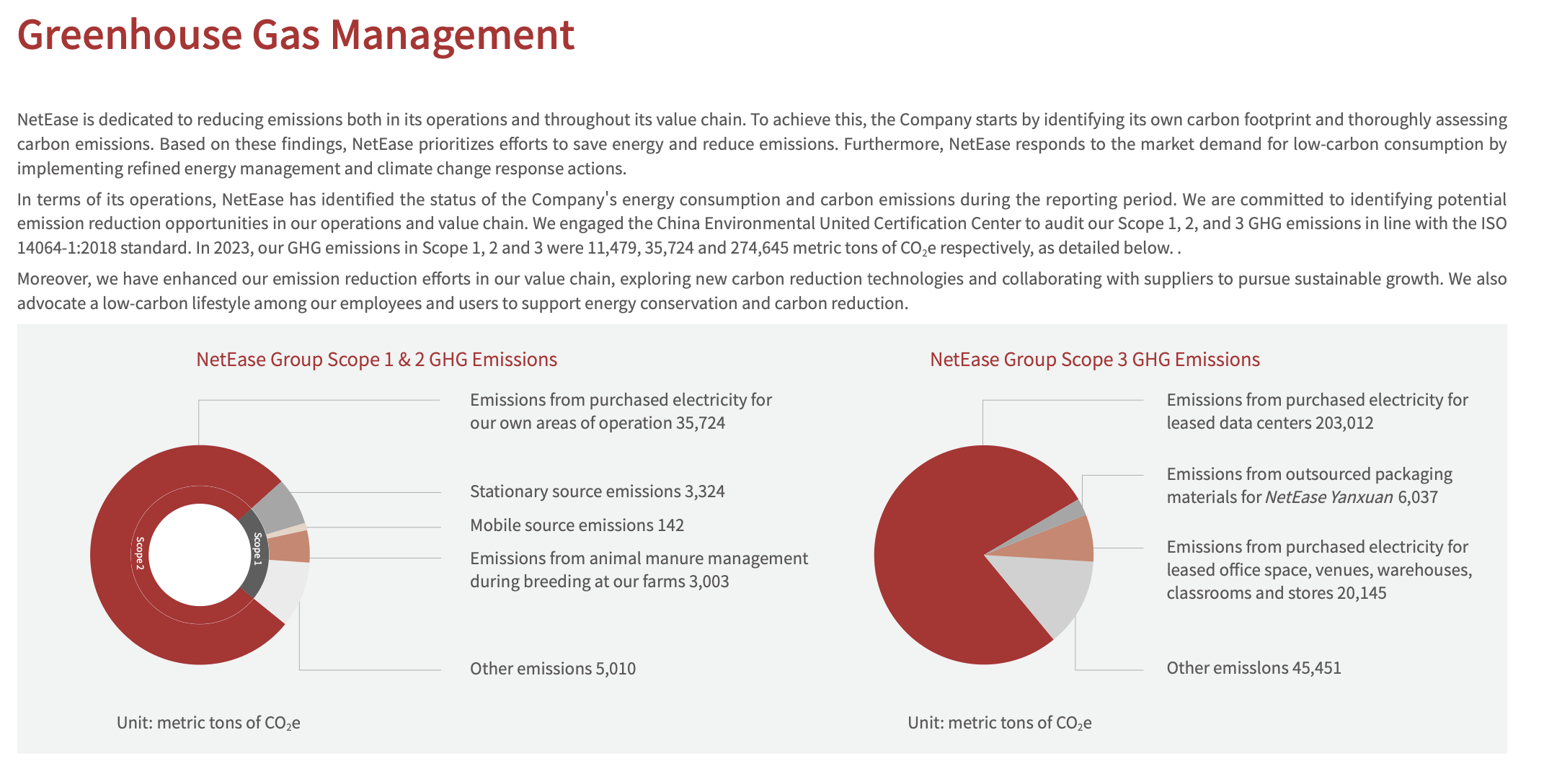
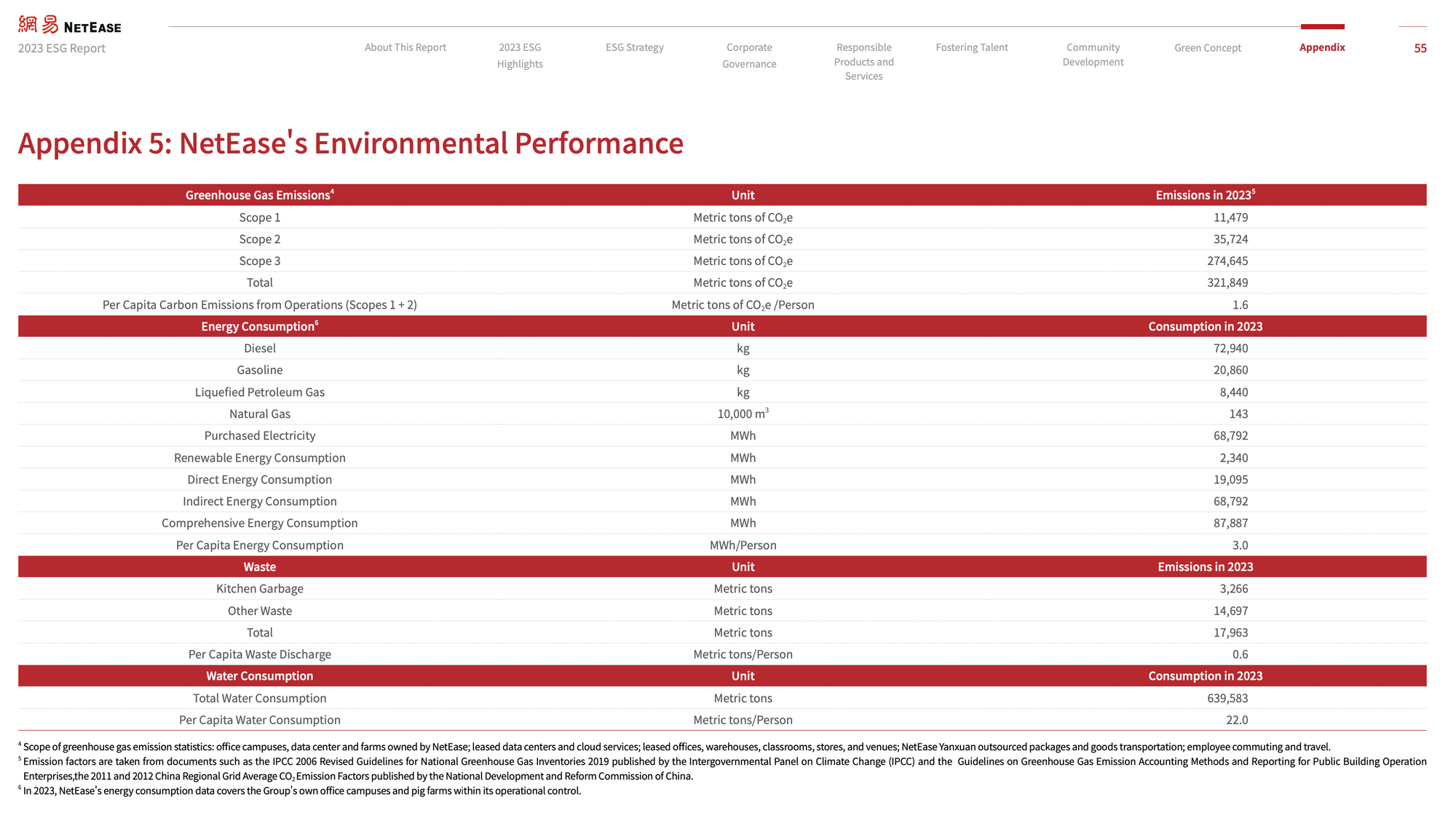
Still missing from this are figures for Scope 3 Category 11 – "use of sold products" which make up the bulk of any games company's emissions. We will have to just use our imagination then.
37interactive's receives SBTi validation
Spotted while checking for this year's report, I noticed that 37interactive have received SBTi validation of their near-term Scope 1 & 2 targets – no word on whether they plan to have a Scope 3 target yet:
The SBTi validated Near Term targets for 37 Interactive Entertainment are as follows:
● 37 Interactive Entertainment commits to reduce absolute scope 1 and 2 GHG emissions 74.3% by 2027 to a 2019 base year.
● 37 Interactive Entertainment commits to increase active annual sourcing of renewable electricity from 0% in 2019 to 100% by 2027, and to continue active annual sourcing of 100% renewable electricity through 2030.
● 37 Interactive Entertainment also commits to reduce absolute scope 3 GHG emissions from purchased goods and services, capital goods and employee commuting 50.4% by 2032 from a 2022 base year.
SBTi has classified the company’s scope 1 and 2 target ambition as in line with a 1.5°C trajectory.

Keywords International annual report
The annual report has emissions disclosures in it for the European development services-based company. [PDF] As a large, listed company with its HQ in Europe, my expectation is they'll be doing CSRD & ESRS reporting on FY2025. The gap between their existing disclosures and what will soon be required is substantial, with a very limited set of Scope 3 categories measured so far:

With so many locations (70+ studios in 26 countries) there's a lot of work ahead for them.
Warner Bros Discovery ESG report
This is their first since the merger last year, during which they skipped reporting on 2022. WBD is primarily a media company, but has a substantial games footprint still. Here's the report [PDF] and the disclosures are below:
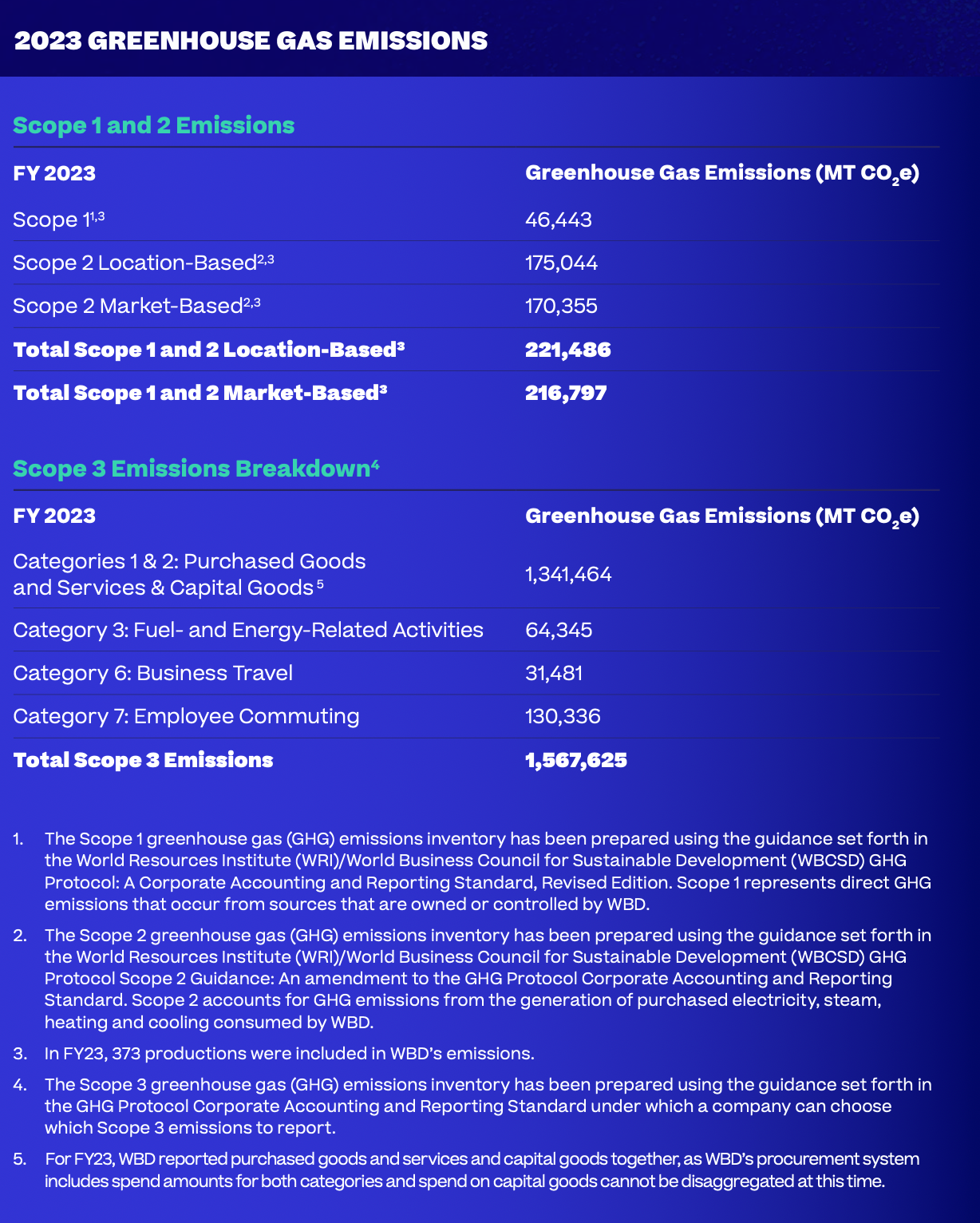
Without a previous year's numbers to compare against, these aren't able to tell us too much – except in comparison to other companies in a similar position. For that, you'll have to wait for the Net Zero Snapshot. 😉 One thing we can see however is they're not buying renewable power very much – the difference between market and location-based Scope 2 is negligible. That's an easy win.
Netmarble's ESG data for 2023
A couple of small issues with the preparation of these figures to note as well: Scope 2 could be either market-based or location-based, and I can't find a statement on which approach it has taken (though "renewable energy consumption rates of 2.5% and 1% respectively mean that there's probably negligible difference between the two) and (deep sigh) there's also nothing at all for Scope 3 emissions. Here's the full report. [PDF]

UK physical game sales down 40%
Maybe the most interesting thing about this the ratio of digital to physical games, while digital was also down it was by much less and remained over double the dollar value of physical sales:
Sales of physical copies of games fell by 40% (to £111.7 million); digital sales fell by 23% (to £236.9 million).

It's this trend that I suspect caused GameStop to tweet out this rather pugnacious meme this week, which received a rather "mixed" response.

Regardless of how one feels about GameStop, it does highlight the very real downsides to the digital transition in games – one that we as sustainability-minded people will need to think about very, very carefully. The political consequences of a shift to digital platforms could be deeply counter-productive, even as it comes with the obvious material benefits of reducing plastic waste.
Of course, the GameStop meme papers over the increasingly common tendency in the shift to always-online, games-as-a-service where even if players own physical media can completely undermine the ability to collect, preserve and hand down functional games once the servers or infrastructure needed to play them gets shut down.
No easy answers here, I'm afraid. Just more questions. Speaking of games on older platforms though...
Jedi Survivor coming to Last-Gen
Releasing a modern game on an older platform is rare enough that it counts as news. But I’d like to see it happen more, to help keep old devices in use and out of landfill.

And in the same vein - here’s an incredible clip of Minecraft running on a GameCube with better render distance than some newer platforms. This is actually insane.
Crammed 25 million blocks into 24 MB of RAM and boosted render distance to 12 chunks on the #Gamecube, now surpassing the render distance of Minecraft on Xbox 360, PS3, Wii U, and matches the Switch (docked). Achieved through a month of extensive optimization.#retrogaming… pic.twitter.com/0RxeTT8CLN
— A Flock of Meese (@meesedev) August 7, 2024
It’s not just AI it’s all tech, says The Verge
“...Putting a bunch of computers in a data center and running them at full tilt is how basically everything works now. If you have a moral objection to AI based on climate concerns, you might have a moral objection to TikTok and YouTube as well, which are constantly ingesting and encoding millions of hours of video. You might have a moral objection to video games, which run both on power-hungry GPUs in people’s homes and often require intense data center workloads for online multiplayer”
This might be a slightly reductive take – I think part of the reaction stems from the fact that, like proof-of-work blockchain before it, AI is a product in search of a use case. There will be some of them certainly, but for most people, I suspect they find it more of a curiosity than a must-use, and that gives the energy use involved a different character than, say, watching my favourite New Zealand carpenter-cum-YouTuber renovate his kitchen. That's something I actually want to see, unlike an AI generated video of Donald Trump and Elon Musk doing the Saturday Night Fever dance with a potential carbon pricetag equivalent to driving to the moon and back.
Nevertheless, the observation that tech has a climate problem is, sadly, correct.
/cdn.vox-cdn.com/uploads/chorus_asset/file/10614679/vpavic_160712_1138_0079.jpg)
On that topic, the recent data centre survey has a bunch of insights as well.

Typhoon Gaemi caused half a million people to evacuate in the Philippines:
“Manila received more than 300mm of rainfall, with resulting floods reaching as high as one-storey buildings in places. More than half a million people have been evacuated or displaced, with 21 deaths confirmed so far.”

And the pictures are even more tragic, compelling

Antarctic heatwave in winter

15bn in insurance losses in 2023
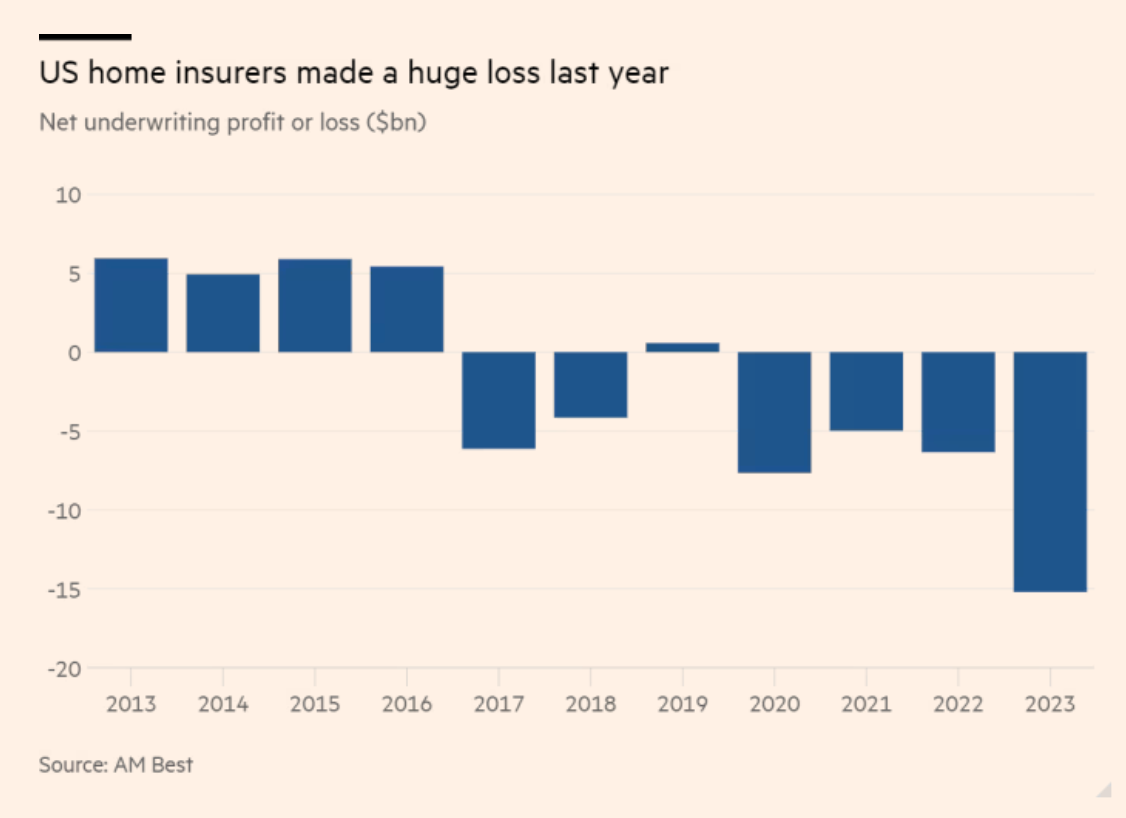
This is what climate chaos means. Higher insurance costs, to the point where some places become economically non-viable. This will happen long before the floodwaters physically arrive, leading to a whole class of people living in perpetual precarity and at risk of losing everything.
More details in this piece in the FT. [Archive version]

Yellowdot Studios roundup of extreme weather over the past fortnight continues to be terrifying and motivating
The Extreme Weather Report, August 15, 2024 pic.twitter.com/BOdkgqqOWc
— Yellow Dot Studios (@weareyellowdot) August 15, 2024
Discounting the Future
This piece is about the way investor's future expectations of returns get used to prevent climate campaigners – prompting the question, who's future really matters?
In the debates on the use of the DCF method in investor-state dispute settlement and international arbitration beyond the Italian Ombrina Mare case, commentators have observed that the inflation of damages based on forward-looking projections rooted in corporate practices presents a serious risk to governments’ abilities to introduce policy, not least concerning climate and environmental crisis. In other words, by committing to the futures imagined by corporations, we risk creating a “regulatory chill” that could jeopardise countries’ clean energy futures. That these futures have been discarded raises a question. Has our relationship to the future been subsumed by the investor’s?

Let's end on a hopeful note
Start with this great chat with one of the world's best thinkers on the interfaces between politics and climate change.
Grab a drink, set yourself down on the couch, and watch Geoff talk real sense about the global dynamics determining our shared future, and what some of the exit ramps might look like. It's about an hour long, but I promise it's worth it. There's so much room for hope about what comes next.
Solid-state battery progress seems good
If this can be done low-cost, this could be transformative, in the same way that Lithium-ion batteries have been. Potential true step change.

Till next time. Thanks for reading! And don't forget to reach out if you're headed to Gamescom.







